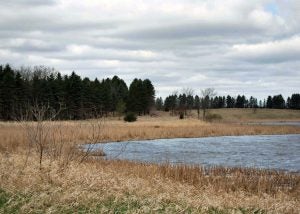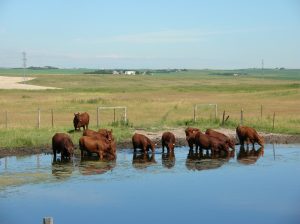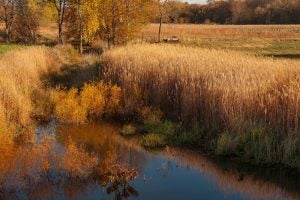As we reported last week, the U.S. Supreme Court delivered a favorable opinion in the much-anticipated case, Sackett v. EPA.
Overall, the decision has been hailed as favorable for farmers and ranchers, but what exactly does that mean?
Illinois soybean grower and American Soybean Association President Daryl Cates said, “SCOTUS’ decision is a clear win for farmers, and the American Soybean Association is pleased the ongoing question at stake — what wetlands are considered Waters of the United States — will be more clearly answered for our country’s farmers; jurisdiction of the Clean Water Act will be less burdensome to those trying to successfully and responsibly maintain their farm operations; and landowners will be better able to identify a WOTUS without costly expert help, an onerous agency process, and risk of severe penalties for not knowing the jurisdictional status of their own property.”
As a result of the recent decision, the Clean Water Act now “extends to only those wetlands that are ‘as a practical matter indistinguishable from waters of the United States.’”
For wetlands to be jurisdictional, they must be adjacent to a “relatively permanent body of water connected to traditional interstate navigable waters” and have a “continuous surface connection with that water, making it difficult to determine where the ‘water’ ends and the ‘wetland’ begins.”
Because of these new (and kind of old) definitions, “Waters of the United States” are, therefore, more clearly traditional interstate navigable waters (e.g., oceans, rivers, lakes), relatively permanent bodies of water connected to traditional interstate navigable waters, and wetlands that have a continuous surface connection with either.
This is an unequivocal win for farmers. Features like prairie potholes and ephemeral streams are no longer jurisdictional. They will not require a federal CWA permit pending guidance on now-required changes to the federal rulemaking.
However, the Sackett holding was not a unanimous decision. But while all nine justices agreed that the significant nexus test is flawed, they issued a majority opinion and three concurring opinions that vary dramatically in their interpretation.

The Sackett holding is not limited to wetlands
The majority concluded the term “waters” encompasses “only those relatively permanent, standing or continuously flowing bodies of water forming geographical features that are described in ordinary parlance as streams, oceans, rivers, and lakes.”
The majority also acknowledged that at least some “adjacent wetlands” qualify as WOTUS. Still, they must qualify as a WOTUS in their own right by being “indistinguishably part of a body of water that itself constitutes ‘waters’ under the CWA.”
Although the court was only looking at the test for wetlands, there was no way to answer the question of what wetlands are jurisdictional without simultaneously answering what defines the other WOTUS the wetlands must be part of. Wetlands must be part of either traditional interstate navigable waters or relatively permanent bodies of water connected to such traditional interstate navigable waters.

The significant nexus test is gone — a win for farmers
All nine justices rejected this test, under which the government previously regulated ecologically, rather than physically, wetlands connected to navigable waters.
The majority held that the CWA never mentions the significant nexus test, so EPA has no statutory basis for imposing it. The majority also rejected the various policy arguments about the ecological consequences of a narrow definition of WOTUS, which “significant nexus” sought to address, noting that “the CWA does not define the EPA’s jurisdiction based on ecological importance, and we cannot redraw the Act’s allocation of authority.”
In addition, “adjacent” cannot mean “near” or “neighboring.” To be jurisdictional, wetlands must not be separated from other WOTUS. “Adjacent wetlands” can only mean those that are indistinguishably part of another WOTUS.
The majority’s definition of when wetlands are part of another WOTUS seems to require a surface water connection. Temporary interruptions are reasonable (e.g., during low tide or drought). Still, any barrier between a wetland and WOTUS severs jurisdiction, with the caveat that a “landowner cannot carve out wetlands from federal jurisdiction by illegally constructing a barrier on wetlands otherwise covered by the CWA.”
The majority opinion, however, leaves many questions unanswered. For example, how brief an interruption in surface connection must be for wetlands to remain jurisdictional; whether continuous surface connections can be established by ditches, swales, pipes, or culverts; how difficult must it be to discern the boundary between a water and a wetland.
The agencies may try to address these questions in a future rulemaking or guidance document.

Sackett also does not allow for jurisdiction over ordinarily dry (ephemeral) features
The majority saw nothing in the CWA that would allow the government to assert jurisdiction over the vast territory it had previously claimed as a WOTUS, some including wetlands and others generally dry.
However, Sackett does not explain what “relatively permanent” means, so it is unclear how long water must be flowing or standing to constitute “relatively permanent flow.”
The American Soybean Association believes that agencies will likely continue to exploit this ambiguity moving forward to try to characterize as many features as having “relatively permanent” flow as possible — but it seems unlikely they could satisfy the Sackett majority’s relatively permanent test.
Sackett does not clarify what it means for relatively permanent water to be “connected to” a traditional, interstate navigable water.
In formulating the test for jurisdiction, the majority describes “a relatively permanent body of water connected to traditional interstate navigable waters.” However, the Sackett majority does not clarify what it means to be “connected to” or when such connections are so tenuous as to sever jurisdiction. Again, the agencies will likely try to capitalize on this ambiguity to pull in as many relatively permanent features as possible, regardless of distance from a traditional interstate navigable water.
What’s Next?
The court remanded the matter back to the Ninth Circuit court for further proceedings consistent with this opinion.
The holding is inconsistent with the most recent “Revised Definition of ‘Waters of the United States’” rule that took effect in March, as well as the pre-2015 CWA regulatory regime, both of which refer to “significant nexus” and both of which are in effect in different states.
Further activity may be likely in the courts as stakeholders sue the government for leaving the existing rule in place. The EPA and the U.S. Army Corps of Engineers will likely rewrite the new rule, but it will take some time.


